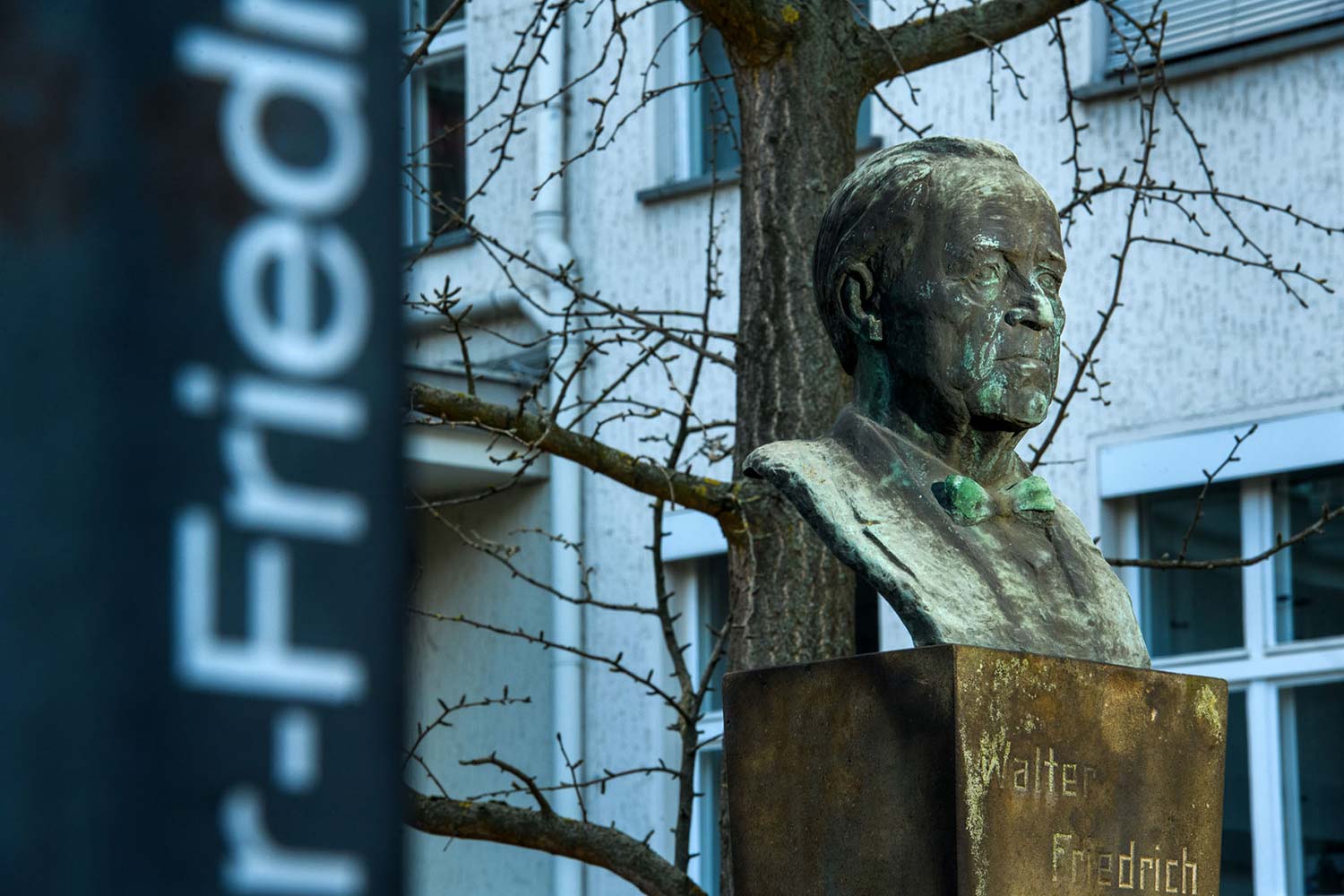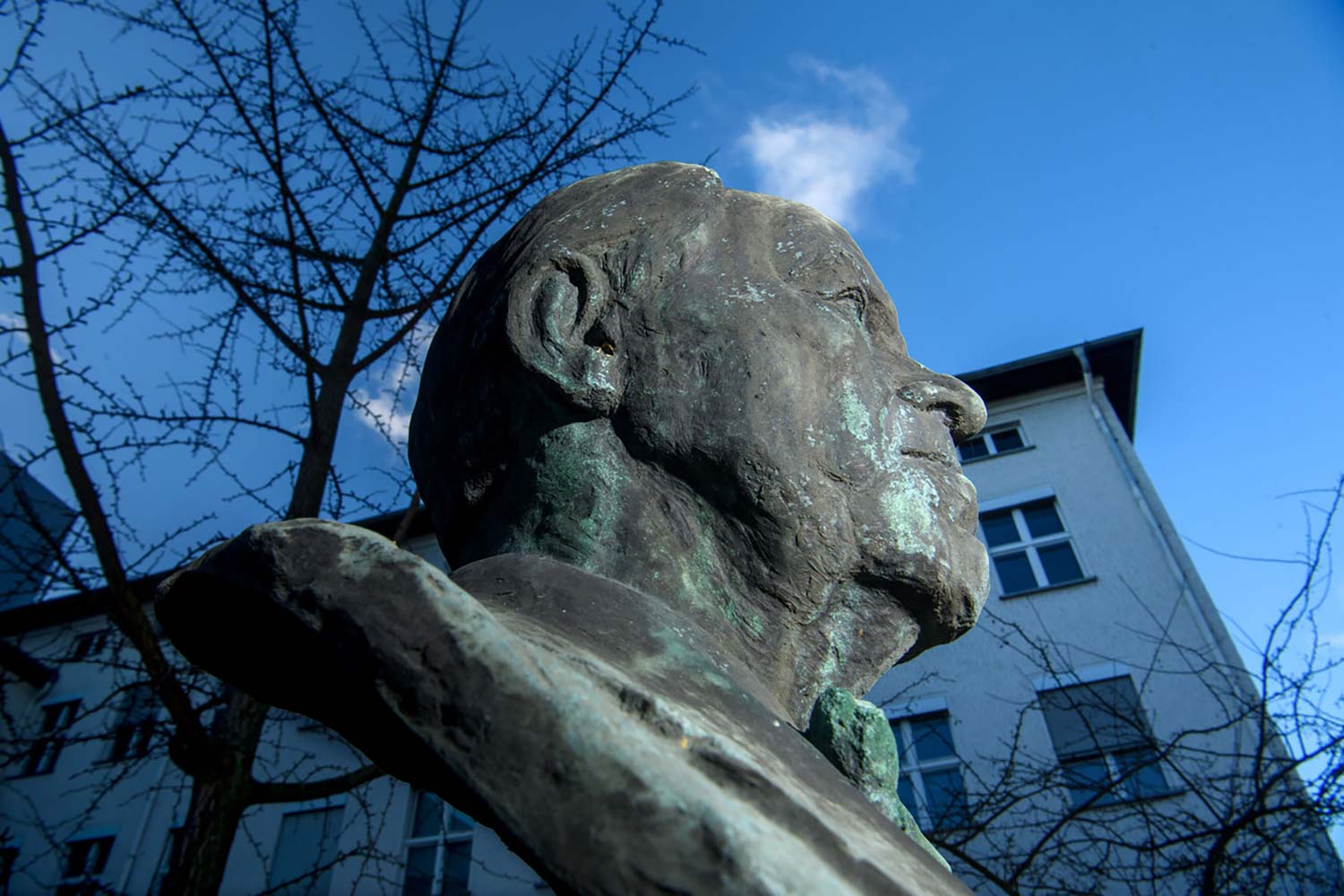12Walter Friedrich
December 25, 1883 in Magdeburg –
October 16, 1968 in Berlin

Walter Friedrich was a biophysicist and later director of the Institute for Medicine and Biology of the Academy of Sciences in Berlin-Buch. With his work on clinical applications for X-rays and radium, he laid the foundation for X-ray structural analysis, a method that has become indispensable for modern research in molecular biology.
Walter Friedrich studied music and physics in Geneva from 1905. He broke off his music studies and moved to Munich to complete his studies of physics. In 1911 he received his doctorate for work carried out with Wilhelm Conrad Röntgen, with a dissertation on ”Spatial intensity distribution of the X-rays emanating from a Platina anti-cathode“. He next worked as an assistant at the Institute for Theoretical Physics in Munich. There, Max von Laue had suggested that the interference of X-rays on crystals could be demonstrated experimentally. This had been considered impossible by Arnold Sommerfeld, the director of the institute, and Röntgen himself. Nevertheless, Walter Friedrich and Paul Knipping managed to prove it. They published their work with Max von Laue in 1912. Laue received the Nobel Prize for this in 1914, but he emphasized the contributions of Friedrich and Knipping. By proving that X-rays undergo interference while passing through crystals – in other words, are diffracted by them – Friedrich and Knipping proved that X-rays are also electromagnetic waves. In the process, they also proved that crystals consist of atoms arranged in three-dimensional arrays. Today, this method has been turned into a powerful tool to use X-rays to determine the atomic structure of proteins, a crucial step in molecular biological research.

In 1914, Walter Friedrich moved to the University Clinic in Freiburg. Here he worked on clinical applications for X-rays and radium and founded the first center for biophysics research at a German university. In 1917 he qualified as a professor and in 1921, the university appointed him to a professorship in physics. Just one year later, the Humboldt University Berlin appointed him to the Chair of Medical Physics and Director of the Institute for Radiation Research. Friedrich remained in his position during the National Socialist era. He published works in collaboration with Jewish colleagues and was able to prevent the deportation of two Jewish researchers after 1933.
Friedrich‘s interdisciplinary approach was unusual at the time. Physicists, chemists and biologists work together with physicians at his institute, which was damaged by air raids in 1944 and later destroyed. In 1947, Friedrich turned down a professorship at the University of Marburg and instead took over the management of the Institute for Medicine and Biology at the Academy of Sciences in Berlin-Buch, which he headed until his retirement. Friedrich built the medical-biological institutes in Buch and the tumor clinic, which became known as the Robert-Rössle-Clinic. Today, this building hosts researchers and clinicians of the Experimental and Clinical Research Center (ECRC) of the MDC and Charité. Friedrich also worked in an interdisciplinary way in Buch. The campus became home to departments for biological cancer research and biophysics.
From 1949 to 1952 Walter Friedrich was Rector of the Humboldt University in Berlin, and from 1951 to 1956 President of the Academy of Sciences of the GDR. He died in Berlin in 1968.
The interdisciplinary approach is still being pursued today on the Campus Berlin-Buch, including the use of X-rays in structure analysis, an approach which he pioneered.
Information on X-ray structure analysis can be found on the website of the virtual microscope museum in the portrait video about the working group of Prof Dr. Oliver Daumke.
Maria Schockel-Rostowskaja, Bronze, 1964